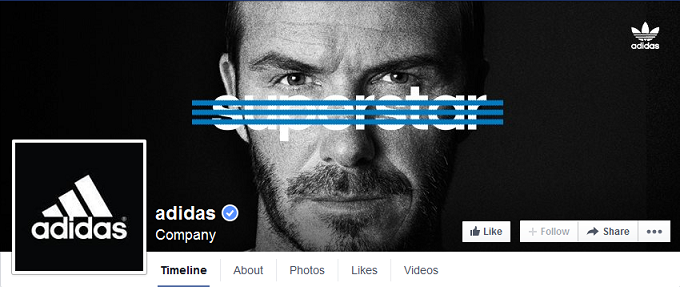
9 Crucial Tips to Enhance Social Commerce Strategies
Has the revenue for your e-commerce site hit a plateau? If so then perhaps it’s time you perfected social commerce.
Around 1.8 billion internet users have used social media and, in 2014, this huge audience made a global social revenue of $20 billion. And it’s set to rise to $30 billion in 2015.
Do you want to be part of this? I know! I know! Is the Pope Catholic?!
Let’s get started with the main ways to enhance social commerce strategies.
1. Make Sure You Use Your Social Media!
Getting into social commerce isn’t as simple as signing up to Facebook and watching the revenue pour in!
You need constant, unique and engaging content to create a steady stream of traffic.
Make a point of keeping an eye on your account’s activity. If a comment or query comes in then you need to respond quickly to keep that user on track.
If you don’t give an answer then a rival will.
2. Don’t Back Out of the Hard Sell
Everyone knows that you’re trying to sell something. Otherwise they wouldn’t have found you.
This means that it’s okay to push your sales focus within your social commerce domain.
Imagine you’re in a food market and trying to decide what’s best to satisfy your stomach. Stallholders will be calling out and trying to get you to sample their delicious goods.
Social commerce is no different.
Adapting your sales pitch into social commerce is vital to stay competitive.
3. Create a Visual Impact
Visual content makes an instant impact and is very effective at engaging consumers, so make sure your social commerce strategies use this.
Take a look, for example, at Adidas’ Facebook page. The cover photo is a very simple design with their three stripe logo, a phrase, and a face.
Yeah, you may struggle to get David Beckham on board, but you can see the message they’re trying to convey: “Our product is for those at the very top of their game”.
It’s instant and makes you want to scroll down to read more.
What’s also important is that little ‘Share’ button on the cover photo. Engaged users are going to hit that and spread the word.
And take a look at how Pinterest allows Sony to engage with niche users by the power of visuals.
Strong images can really pull the right consumer into a certain niche in a brand’s inventory.
People who love gadgets always want to know about new products, so using these as visuals can act as a trigger point for conversion. In this instance, we can see that by following the ‘Brand New Sony Products’ page, consumers are being moved towards the Sony store.
Getting the right user in the right conversion funnel isn’t always easy, but visual cues can speed it up.
4. Made a Sale? Let the World Know!
Social media is the best platform for word of mouth, so your brand can really clean up in the promotion stakes here.
Say someone’s just bought a product from your store. It’s a great thrill to have made that cash, but how can you maximize the effects of this sale?
Simple: ask shoppers to share their purchase with the world.
Many online stores have already used Twitter, Facebook and Pinterest buttons to show the world what people are buying and, more importantly, where to get it.
5. Sponsored Posts
With huge audiences at your fingers a great way to target the right people is through sponsored posts.
On Twitter, for example, you can post a promoted tweet which you can then aim at the people most likely to convert. This will show up in their feed and, hopefully, they’ll click it.
With the looming full scale roll out of Twitter’s buy button, this is going to become vital to make revenue.
The great thing about promoted tweets is that the engaged consumer will want to click ‘Retweet’ to share this deal with their friends. Word spreads further and the conversion rate increases.
6. Use Analysis Tools to Maximize Performance
Many social media platforms contain analysis tools to show how your content is being consumed.
The most well known analysis tool is Facebook Insights.
By giving detailed breakdowns of the demographics and their behavior on your Facebook page, Facebook Insights allows you to tailor future social commerce strategies.
Say, for example, you find that your status updates are gaining little attention, but photos are getting huge engagement rates. Of course, you’ll want to continue sharing awesome photos, but how about adding photos into your status updates?
By focusing on the visual impact of photos you may now find that your status updates receive more shares. If that status update also contains a link to a product, then you’re optimizing the conversion rate.
The great bonus of analysis software is that it allows you to carry out A/B testing to structure really solid campaigns that consumers can’t resist.
7. Listen to Your Customers
We all know that social media is a great place to interact with friends, but it’s also the ideal platform for your brand to speak to its customers.
The beauty of social media is that real time conversations can take place between brand and consumer. The resulting feedback can be priceless, so you need to ensure you take your customer’s needs seriously.
If resources allow it’s a good idea to employ a social content manager who can concentrate on interacting with clients on social media. It creates a good bond between brand and customer where the pay off is return custom.
8. Social Media Exclusives
People like to feel special, so why not use social media to make them feel part of an exclusive community?
You can do this via these promotions:
- Special discounts advertised to followers of your brand
- Unique products only offered through social media
- Early sign up or reservation offers
This is a very clever way of allowing consumers to get a great deal, but at the same time enhance revenue through new streams.
9. Choose the Right Platform
Not every platform will be right for your brand.
Take LinkedIn, for example, where professionals look to make contacts within their respective industries.
It’s a great place to promote your recruitment business, but not so great for a fast food restaurant!
Make sure you do a bit of research first to find which platform is best. It’ll save you time and money.
The Rise of Social Commerce
Social commerce, then, is a vital area for your brand and one that needs to be managed correctly.
The revenue is clearly there for anyone to see, so try using the tips above and see how you get on.





